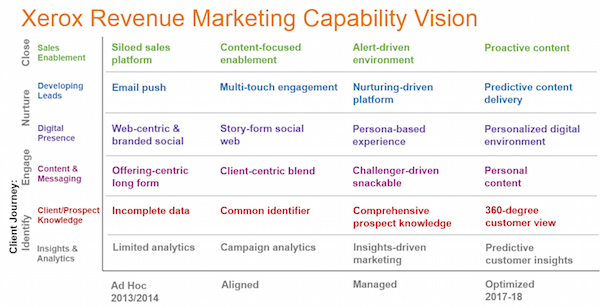One of the best things about the MarTech Conference for me is the amazing group of marketing technologists that I get to meet face-to-face. It’s fascinating to hear their stories of how their careers developed and the kinds of work that they’re doing for their companies at the intersection of marketing and technology.
Chris Campbell, Director of Marketing and Sales Solutions at General Mills, was one of the great folks I got to meet in March at our San Francisco event. He graciously agreed to participate in a Q&A to share a bit of his experience with us.
1. Can you tell us a little about your background and your current role?
I am the director for Solutions Development for Sales and Marketing at General Mills. I came to the world of martech through a path of retail management, operations leadership, and a curiosity about the power of technology. I have spent most of my career in the retail and CPG industries. Functionally, my background is in operations and program management.
2. Can you describe the relationship between your team, marketing operations, marketing technology, and IT? How do these pieces fit together?
My team is a part of a shared service organization responsible for both solution development and service delivery in the areas of technology, continuous improvement, and employee services. We partner with the marketing teams to run and steward the tech stack supporting our in house digital marketing efforts on the martech side and that complements our responsibility to deliver on the marketing operations side. Our clients are our internal functions: marketing and sales. We partner with them to deliver on their overall strategies.
We partner with the marketing teams to run and steward the tech stack supporting our in house digital marketing efforts.
3. When we talked earlier, you were telling me a little about the effort to coalesce General Mills’ first-party data in-house? Can you describe that project?
Our strategy is to put the consumer first. In order to do this, we must be in tune with what they want and what jobs they need done. We believe that first party data is an excellent source of this type of information.
Like many manufacturers, we are thirsty for first party data. Unlike many manufacturers, we have a fantastic internal team that has created a multi-dimensional publishing platform around food and consumer experiences. Working together with this group, our team was able to in-source our first party data collection, build a taxonomy and supporting meta data strategy, and thus create a foundation for 1-to-1 precision marketing.
4. General Mills has also developed a certain amount of web experience marketing technology in-house as well, right? What was the rationale for building that in-house? What advantages has it given you?
We believe in a build and buy strategy when it comes to our digital production efforts. For the build side, we chose to assemble a team internally that works hand-in-hand with a chosen 3rd party ecosystem to offer digital production capabilities around the globe. This allows us to offer a high quality, standardized, and cost competitive service at scale across both our developed and developing markets.
5. How has General Mills worked to create marketing agility as a large company?
We have a clear focus. It all starts with our consumer and what job they need us to do. This forms the foundation for all of our priorities.
In the martech space, we have created agility in a few ways. First, we embraced mobile as the device of choice early on. Second, we built a standard set of components that can be deployed across any site — making it easy to roll code, fix bugs and test/deploy new capabilities.
Most importantly, we invested in “always on” teams. For us, agility is about simplicity, reliability, and response. Our “always on teams” are comprised of marketing, agency, and tech resources that work as one team to deliver the consumer the best experience possible. These teams follow Scrum agile principles, and we ensure that in each sprint we balance new capabilities with tech debt.
Our “always on teams” are comprised of marketing, agency, and tech resources that work as one team to deliver the consumer the best experience possible.
I want to make one more point here. It all starts with amazing people. From there, we ensure that organization boundaries are never a barrier to delivering a top level consumer experience.
6. As a global company, how do you approach scaling out new marketing capabilities in different markets worldwide?
I would love to say we have it all figured out. We don’t. We have a long way to go in this area. However, our premise is based on three pillars — connected data, common capabilities, and marketing operations.
Our premise is based on three pillars — connected data, common capabilities, and marketing operations.
Our marketing operations capabilities are further along in this space. As for our marketing tech journey, the strategy is make it work in the US first, and then gather the wins for international. A couple of examples are things like email service providers, Gigya, and Woobox. We don’t yet have the scale internationally to leverage these tools, but once we choose them in the US, we have the ability to share them globally.
Thanks, Chris!
P.S. If you work at the intersection of marketing and technology in Europe, we’d love to hear from you in our call-for-speakers for MarTech Europe, which will take place in London, October 20-21, 2015. Come share your experience and learn from your peers in return!




Great article and very informative interview. Shows how marketing and technology are now totally intertwined, and how this can serve the consumer better. Nice piece on where the future of marketing is headed.